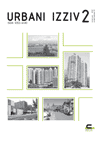Selected spatial effects of the global financial and economic crisis in Ljubljana, Slovenia
Selected spatial effects of the global financial and economic crisis in Ljubljana, Slovenia
Author(s): Simon KušarSubject(s): Social Sciences
Published by: Urbanistični inštitut Republike Slovenije
Keywords: economic geography; urban geography; financial and economic crisis; spatial effects; real estate; Ljubljana; Slovenia
Summary/Abstract: In 2007, the United States witnessed a financial crisis that gradually developed into one of the most serious global financial and economic recessions in the history of (post)modern society. Its effects are numerous. This article studies one of its spatial effects; that is, newly built (after 2005) residential and office buildings that are either unfinished or already built but not fully occupied. In Ljubljana in November 2011, there were ninety-seven locations with unoccupied or partly occupied residential houses and office buildings or groups of houses and office buildings together with abandoned or active construction sites. The majority of the structures studied were predominately represented by several blocks of flats and groups of dwellings. The others are office buildings or buildings and complexes with distinctively mixed residential-business functions. There are more than 1,500 empty flats and almost 75,000 m² of office area in the buildings surveyed. Spatial analysis showed that the structures surveyed are relatively scattered throughout Ljubljana. However, there were some clusters of buildings, especially in areas with the best accessibility. This article analyses the causes of this phenomenon, which is creating a new morphological element in Ljubljana. The article concludes by stating possible directions for future research.
Journal: Urbani izziv
- Issue Year: 23/2012
- Issue No: 2
- Page Range: 112-120
- Page Count: 9
- Language: English

